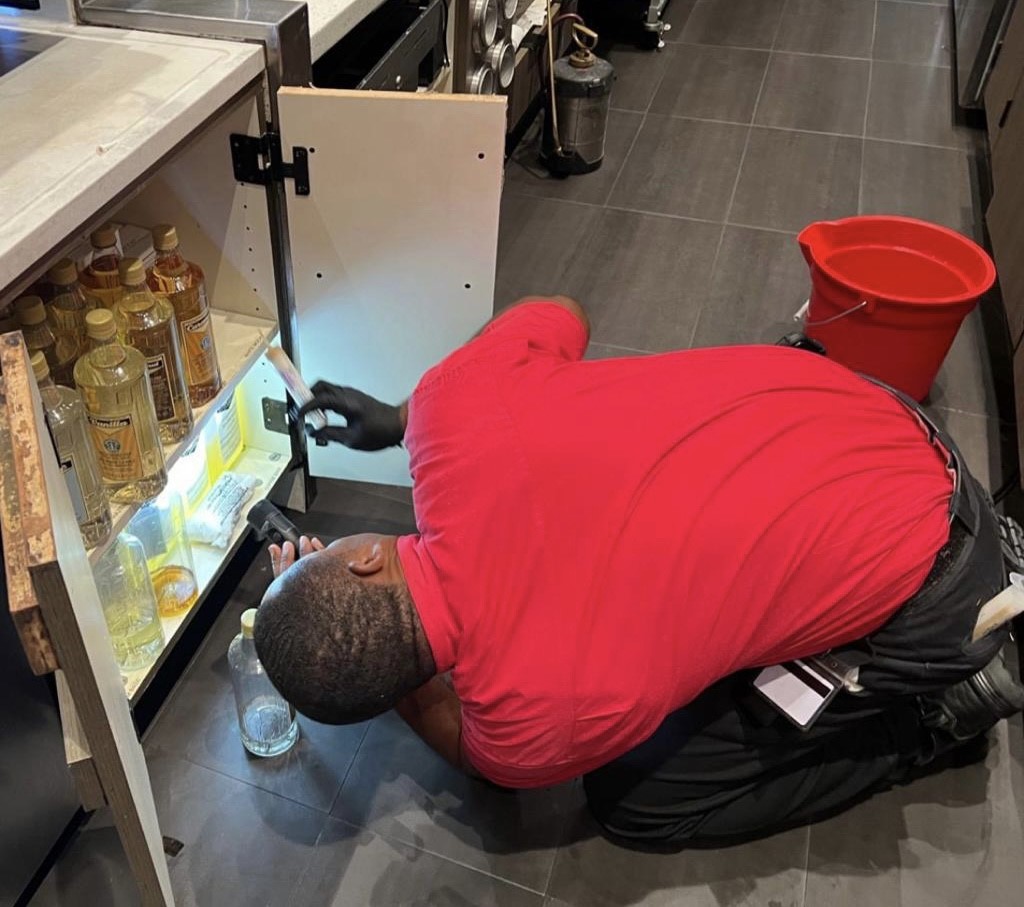
01 Nov Trust the Process: The Value of an Inspection
“We saw it with our own two eyes, and it was as big as a dog!” This kind of recount is one our technicians are commonly faced with, and while in some instances it’s accurate, the details are insufficient for us to work with.
You see, one of the most detailed components of our work as pest control professionals is conducting inspections. Inspections are often tedious and time-consuming. Yet, they require our service technicians to thoroughly investigate before beginning a pest treatment plan.
“But why?” you may ask, especially if you’ve done your best to describe what you’ve seen. Well, there are a few reasons why we cannot solely rely on your account and jump right into applying a chemical.
The first reason is that an inspection tells us precisely the kind of pest you saw and what we’re looking for. Let’s say maybe you saw a rat. Was it a Norway rat or a roof rat? Or could you have mistaken an adult mouse for a juvenile Norway rat? Pest identification is necessary and requires exceptional attention to detail. Each potential pest species leaves behind different evidence of activity. We’re not always going to find the target pest during the inspection, so we must pay close attention to the environment and any signs of activity. This means looking for and at droppings (yuck!), the type of visible damage, sebum marks, shed skins, ootheca, or sniffing around for distinct scents. Once the inspection has revealed the kind of pest pressure you’re facing, we can proceed to the next step; identifying where this pest pressure is.
Finding where pest pressure is occurring is equally as important as identifying what the pest pressure is. It is this acknowledgment that differentiates the two types of pest control. With the first type, there’s indiscriminate “spraying” that gives the illusion of successful control because a chemical is applied any and everywhere. However, this type of pest control fails 99% of the time. The 1% success rate occurs only by happenstance when something encounters the product applied. The second type of pest control is professional pest control. This involves precise product application with a dual focus on eliminating the target pest and protecting people, plants, and property. It is with the latter in mind that we ensure pest ‘hot spots’ are identified. Harborage sites or areas frequented by pests determine the type of product we select. It also guarantees the target pest will intentionally contact the product designed to eliminate it.
Once we’ve successfully identified the target pest and where its harborage is, we can focus on why it’s chosen the affected property for its domain. Professional pest control is not just about eliminating a pest, although it’s easy to think that. It’s more about identifying and correcting the conditions in our environments that contribute to their presence and activity. Conducive environments are ones where once a pest enters, the conditions contribute to its survival with minimal to no disruption. These environments can be identified by three key components. The first two are environments where water and food are accessible. This happens either through improper food or water storage, excess moisture, or the presence of a leak, creating standing water. The third is an environment where trash or clutter is allowed to build up. Without eliminating the “why”, control becomes nearly impossible as the products applied often must compete with life-sustaining elements in the pest’s environment.
Finally, a proper inspection answers the question of how the pest gained access to the structure. Contrary to popular belief, it is impossible to prevent a pest from ever gaining access to a structure. Along with windows and doors, structures contain other access points like loading docks, trash chutes, openings around pipes and electrical wires, AC ducts and vents, and cracks and crevices. Buildings that receive packages and boxes tend also to receive German cockroaches. Other urban pests like Norway rats can squeeze through a hole no larger than ¼ inch in diameter. Scary! When access points are identified, recommendations are made to restrict future access by other pests. Without identifying and remedying these points, pests can be introduced to a structure over, and over, and over again.
A thorough inspection is the first step to resolving any pest pressure. Without it, you’re left throwing things at the wall waiting to see what sticks. While this may be fine with the pest control operator, we guarantee it will not sit well with a client who is paying for results but not seeing them. It also doesn’t benefit the client or their environment to be unnecessarily exposed to toxic chemicals. This exposure happens when an operator neglects a proper inspection and fails to find an answer to the ‘what’, ‘where’, ‘why’, and ‘how’.

Sorry, the comment form is closed at this time.